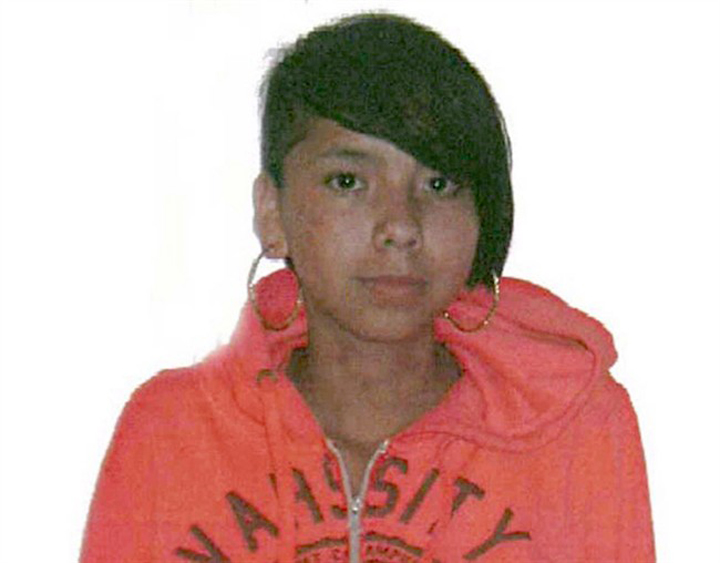It’s a decision the 11 person jury is tasked with. Deciding whether or not Crown counsel has proven, beyond a reasonable doubt, that Raymond Cormier is guilty of second-degree murder.

Cormier, 56, is accused in the murder of 15-year-old Tina Fontaine.
READ MORE: Deliberations underway in Raymond Cormier trial
The jury broke around 9 p.m. Wednesday and began deliberations again at 8:30 a.m. Thursday.
Justice Glenn Joyal spent nearly four hours instructing the jurors on the evidence and the law on Wednesday.
“As judge of the law, it is my duty to preside over the trial,” Joyal told the jurors. “I decide what evidence the law permits you to hear and consider, and what procedure we will follow in the case. Now, at the end of the evidence and addresses, it is my job to explain to you the rules of law that you must follow and apply to make your decision.
“Deciding the facts is your job,” he told the members of the jury Wednesday. But reminding them “justice will not be done if you wrongly apply the law.”
Joyal told the jury they are each to decide the facts of the case for themselves.
“While you must be unanimous, you do not all have to come to the same conclusion, with the same reasoning,” Joyal said.
In a precedent setting move, Joyal released his full written charging instructions to the media Thursday morning.
READ MORE: Emotional, tearful day of closing arguments at Raymond Cormier trial
The 161 page document, which can be found at the bottom of this article, goes over each piece of evidence in great detail and defines the differences between direct and circumstantial evidence.
He tells the jury to consider the evidence and make a decision “without sympathy, prejudice or fear.”
Decision Tree
Jurors were also each provided with a ‘decision tree.’ While it appears overly simple, there are a number of pieces of evidence that needs to be taken into consideration to be able to answer each question.
There are two questions jurors need to be able to answer in the affirmative, and without reasonable doubt, to find Cormier guilty.
- Was Tina Fontaine’s death caused by an unlawful act?
- Did Raymond Cormier commit the unlawful act?
There are only two verdicts they can reach: not guilty or guilty of second-degree murder.
At the end of the jury’s instructions they are given a summary of both the Crown and the defence’s position on the case in each lawyer’s own words.
Crown Position
- 2 teens charged with murder in case of 16-year-old killed outside Halifax mall
- Green Party deputy leader given jail sentence for Fairy Creek old growth protests
- Cars torched, explosions heard in suspected arson in Montreal neighbourhood
- Gas station clerk stabbed several times during violent attack at Ultramar in Montreal
As it relates to cause of death, the Crown says Tina Fontaine’s death was caused by a wrongful act; either smothering or submersion while still alive. The other possible causes of her death says the Crown, are quite unlikely. The pathological evidence is but one part of the determination of her cause of death.
The Crown submits that death by a wrongful act can be inferred from the attempt to conceal Tina Fontaine’s body. In this regard, it can be inferred that this was done to hide a wrongful act. The Crown reminds you that Raymond Cormier admits committing an unlawful act in saying such things that include that he “finished the job”, that “she was dead by sunset” and “It’s right by the shore – I threw her in.” His statement to DeWolfe that he saw her and “took care” of the problem is a further admission. The Crown contends that Cormier’s motive to silence Tina Fontaine can also be used to infer that she died by an unlawful act.
As it relates to whether it was Raymond Cormier who committed the unlawful act, Mr. Cormier’s post-offence conduct (lies to police and flight upon arrest) can be considered as evidence of identity. That is, that it was he, Raymond Cormier, who committed the unlawful act. As well, the Crown points to the circumstantial evidence that Mr. Cormier had the means, opportunity and motive to harm the deceased.
Respecting means, the Crown points to the uncommon Costco Chloe Green duvet cover and the truck.
Respecting opportunity, the Crown points to Tina Fontaine’s intention to get a bike from the accused, Cormier’s ongoing repeated contacts with Fontaine, her availability, and Cormier’s statement to DeWolfe that he had met and spoken to Fontaine after August 6, 2014.
Respecting motive, the Crown points to Cormier’s need to silence Tina Fontaine because she threatened to report him to the police.
Most tellingly, the Crown reminds you that Raymond Cormier admits to being the person who harmed Tina Fontaine.
Defence Position
The defence says that you should believe Mr. Cormier with respect to his denials in the involvement of the death of Tina Fontaine. The defence points to Mr. Cormier’s consistent denials in his warned statement and his evidence regarding how he first met Ms. Fontaine as well as how she left his company on August 6, 2014. The defence further says that the reasonable interpretation of the audio recordings of Mr. Cormier from Project STYX supports Mr. Cormier’s innocence.
The defence points to his repeated comments to third-party individuals as well as undercover officers that he was not involved in Ms. Fontaine’s death, that he wants to find her killer, and that regrets what he told her the last time he saw her. The defence suggests that all of this combined, should lead you to accept his position that he was not involved in Ms. Fontaine’s death. Accordingly, the defence says that you should acquit Mr. Cormier. It is the defence’s position that even if you do not completely believe Mr. Cormier in his denials, his denials should raise reasonable doubt.
In the event that you do not believe Mr. Cormier and his denials do not leave you with doubt, the defence submits that the Crown has not met its burden of proof beyond reasonable doubt with respect to the first question of whether or not Ms. Fontaine’s death was caused by an unlawful act. The defence says that based on the evidence of the forensic pathologist and the toxicologist, there are two reasonable, alternate possibilities for the cause of Ms. Fontaine’s death.
These would be an overdose by combination of gabapentin and alcohol, or alternatively, death by self-smothering. The defence argues that these possibilities are supported by the evidence from the pathologist and toxicologist. The defence says that these possibilities are more than mere speculation and are reasonable when you consider the evidence as a whole, including Ms. Fontaine’s self-admitted and observed use of alcohol and illicit drugs. Accordingly, the defence says on this first question, you should acquit Mr. Cormier.
The defence also argues, that even if you are required to address the second question, it says that the Crown has not proven beyond a reasonable doubt that Mr. Cormier was the individual who caused Ms. Fontaine’s death by unlawful act. The defence submits that Mr. Cormier’s comments recorded on the intercepts are not admissions of guilt, but rather are statements consistent with his non-involvement in her death. The defence argues that the remaining circumstantial evidence relating to the death of Ms. Fontaine does not support the inference that Mr. Cormier was the individual who caused her death beyond reasonable doubt.
In this regard, there are two main pieces of evidence: the duvet cover and the truck. The defence says that the witnesses who identify the duvet cover should not, and cannot, be believed due to both issues of credibility and reliability. The defence further says that there is no forensic link between Mr. Cormier, Ms. Fontaine’s body and the duvet cover in which her body was discovered, and the truck that the Crown alleges was used to transport Ms. Fontaine’s body. Overall, the defence says that the Crown’s evidence in this regard does not meet the threshold for proof beyond reasonable doubt with respect to this part of the test and as such, you should acquit Mr. Cormier of the charge.






Comments